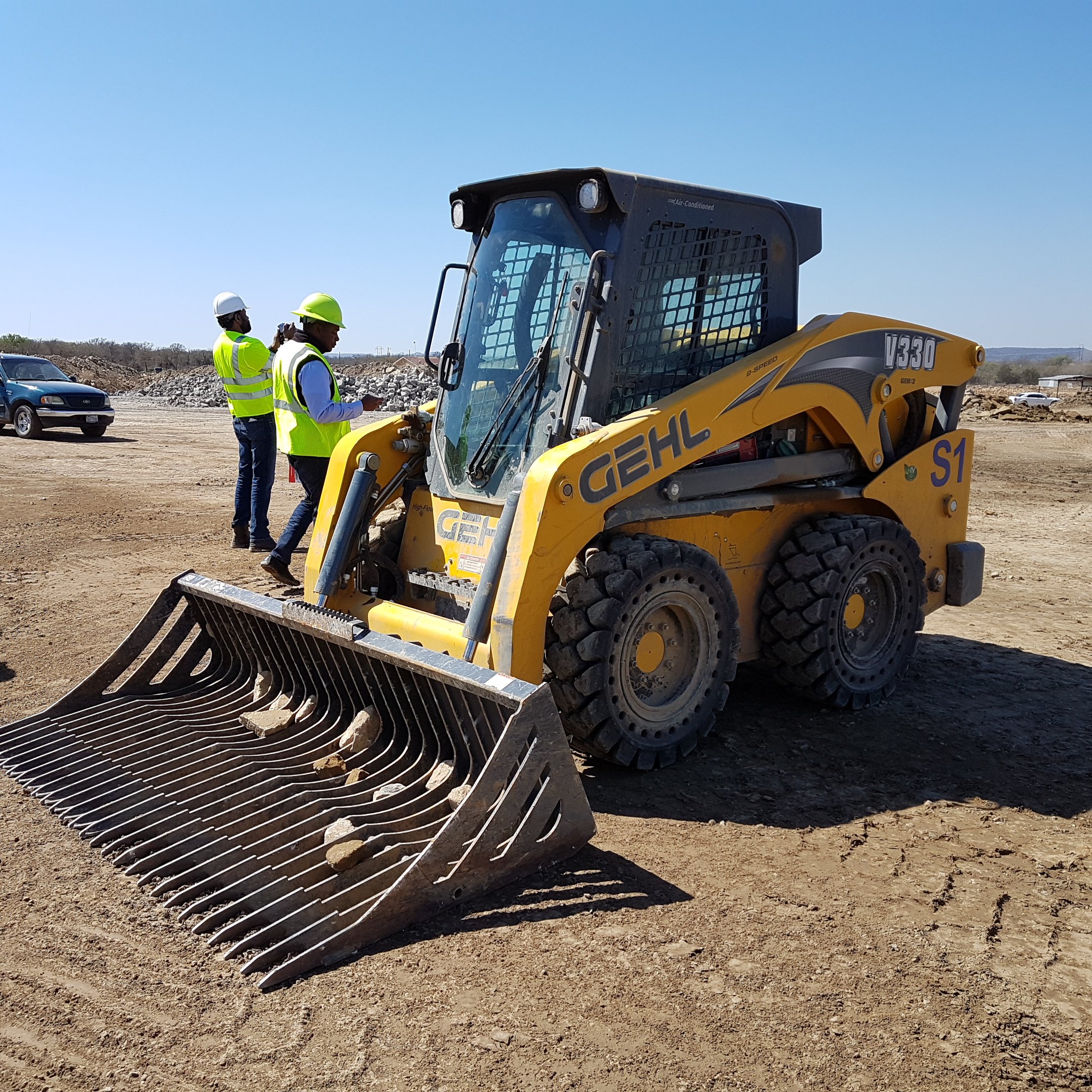Why You Should Choose a Solid Tire for Your Skid Steer
More and more industries are turning to skid steers to handle difficult jobs in demanding terrain that challenges even the toughest tires. Between the sidewall-slashing and puncture-threatening debris found on demolition sites and in recycling centers, and the wicked wear caused by hard surface use, skid steer operators in the past would fill their pneumatic tires with foam to maximize uptime and prevent flat tires on the job site.
Since the recent popularization of solid skid steer tires, operators have a choice of whether to upgrade their fleet to solid tires or continue the older practice of foam-filling pneumatic tires. Here are a few reasons we believe will make choosing a solid tire (hopefully from Galaxy) a no-brainer.

Improved Uptime: Solid tires provide the ultimate in puncture resistance, which is a boon for machines operating in scrapyards, quarries, demolition, and waste and recycling facilities, where tires encounter everything from rocks to rebar to debris. While foam-filled pneumatic tires offer higher puncture resistance than traditional pneumatic tires, they’re still more susceptible to downtime-inducing damage than solid tires.
Superior Sidewalls: Solid tires will simply not be compromised by punctures or slashing, unlike foam-filled pneumatic tires. One of the areas a foam-filled pneumatic tire is most susceptible is on the sidewall, but they’re also vulnerable to punctures too large for the foam to compensate for. When a foam-filled tire suffers this type of damage, it’s catastrophic and the tire needs to be replaced. Additionally, the foam filling is also lost.
Smoother Ride: The filling used in a foam-filled tire will often become stiff and rigid as it ages, resulting in a harsh, uncomfortable ride that is inferior to the one offered by a solid tire. While neither foam-filled nor solid tires will deliver the comfort of pneumatics, features like apertures—small openings built into a solid tire that allow it to flex—are being integrated into solid tires to improve their ride quality.
Reduced Downtime: When solid tires need to be replaced, the procedure is extremely simple and fast—generally, the tire and rim are replaced simultaneously. Removing foam-filled tires can be difficult and time-consuming, as the foam and tires need to be cut off of the rim before a new tire can be installed.
Longer Lasting: Solid tires are built to last. In fact, the tires found in our line of Galaxy Solids routinely last three to four times longer than comparable pneumatic tires. Although foam filling can prevent a tire from meeting an early end from a puncture, it is also hard on tires and can expedite wear.
Minimal Maintenance: Just bolt solid tires on and get to work. There’s no need to check air pressure or look for chunks and cuts that may be leaking foam. To foam fill a tire, it’s necessary to make a hole in the casing—creating a weak spot where cuts propagate and can result in failure.
Better Total Cost of Ownership: Solid tires cost more up front than foam-filled tires. However, given their reduction of downtime (and all the benefits derived from it), along with superior durability and a longer lifespan, the cost of ownership of a solid tire is considerably better than what’s offered by a foam-filled tire.
Application-Specific: Our Galaxy solid skid steer tires are designed to excel in the toughest terrain and harshest conditions. Foam-filled tires attempt to retrofit an existing tire to make it more rugged. This leads us to the most important difference…
According to the Merriam-Webster Dictionary, the definition of pneumatic is “of, relating to, or using gas (such as air or wind).” In other words, pneumatic tires are engineered to be filled with air, not foam. We know this because we build lots of pneumatic tires in addition to our solid tires. Foam filling changes the way the tire flexes, increases wear, and adds additional stress to the tire’s casing. In contrast, solid tires are engineered to deliver maximum performance and life from the factory—no adjustments, tweaks, or fillers necessary!
If you want to learn more about our ever-expanding line of Galaxy Solid tires and how they will outperform, outlast, and cost less in the long run than foam filling an existing tire, contact your local dealer or rep today.


